New Arcadia
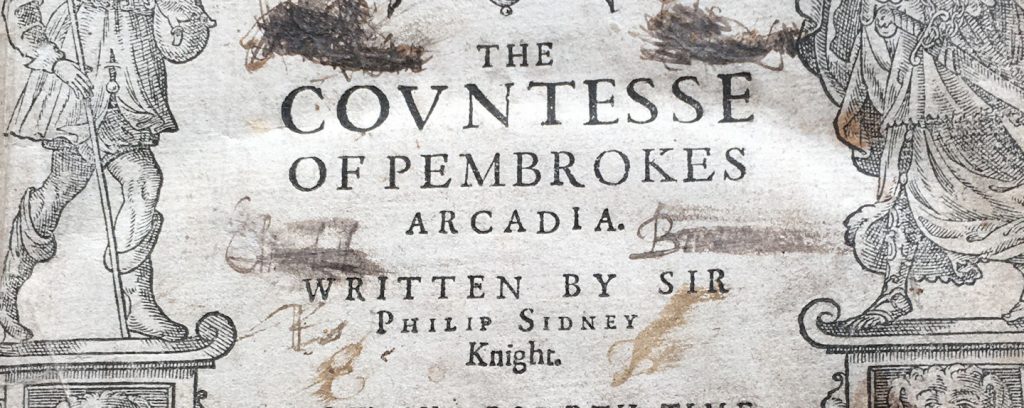
The Library was recently given a 1613 copy of The Countess of Pembroke’s Arcadia. Commonly referred to as simply Arcadia, the text was first composed by Philip Sidney as early as the 1570s. Initially intended as an amusement for his sister Mary Herbert (Countess of Pembroke), Sidney reworked the draft into a longer piece in the 1580s but died in 1586 before finishing it. This reworking is often referred to now as the New Arcadia, and his 1570s draft as Old Arcadia.
Over the following half century, many editions of the New Arcadia were published in different stages of completion. Mary herself published one in 1593 with a new conclusion (the previous 1590 publication had ended mid scene) and it was not until the 20th century that the manuscripts of Old Arcadia were rediscovered and published.
This 1613 edition then, described on its title page as the ‘fourth time published with some new additions’, represents an important part of the textual history.
However, what really makes this particular copy interesting is the way in which it has been treated by its owners over the last 400 years.
'Her Booke'
The front flyleaf (the first page inside the book) carries a great host of signatures which belong almost exclusively to women. Although it was printed in 1613, the first dated signature is from 1694 (Mary Dolman). It seems to have passed to a Margaret Jordan in 1697, before returning to a different Mary Dolman in 1703 and though the owners could certainly have entered a date other than the one on which they received the book, the implication is that it changed hands three times in the space of ten years.
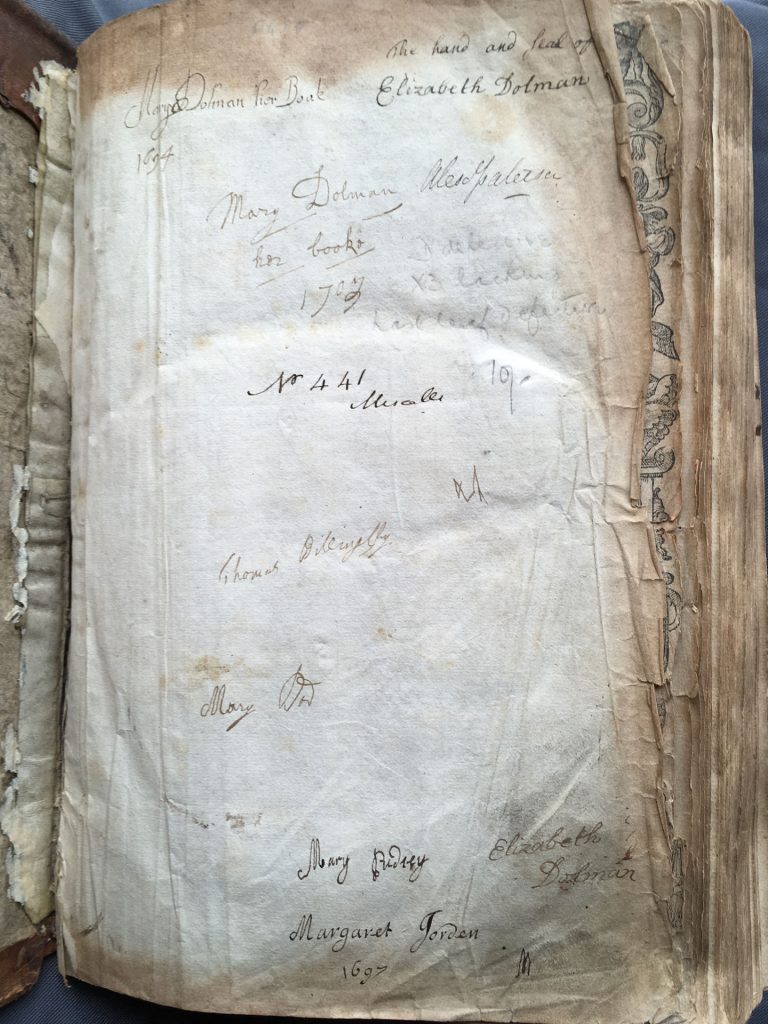
Perhaps earlier in the chronology is Elizabeth Dolman, who signed the front flyleaf in the top right with the message ‘The hand and seal of Elizabeth Dolman’ and more roughly in the bottom right. A particularly curved capital E appears each time and in practice form at the rear of the book (see below left). It would be nice to imagine that the Elizabeth Browne who has signed the title page (below) and one of the first pages of ‘The First Booke’ with the same characteristic curved Es as Elizabeth Dolman is the same woman under her maiden name. However there are several variations in the handwriting which mean this can be no more than speculation. The binding itself has been tooled ‘E B’, presumably after Elizabeth Browne (below right).
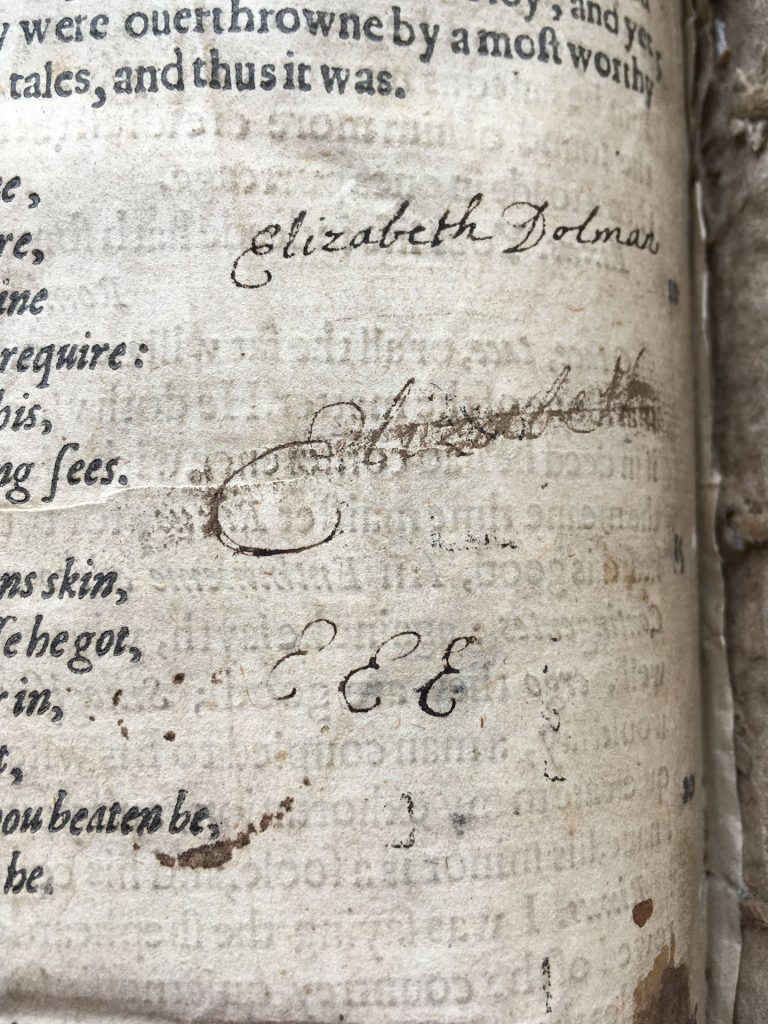
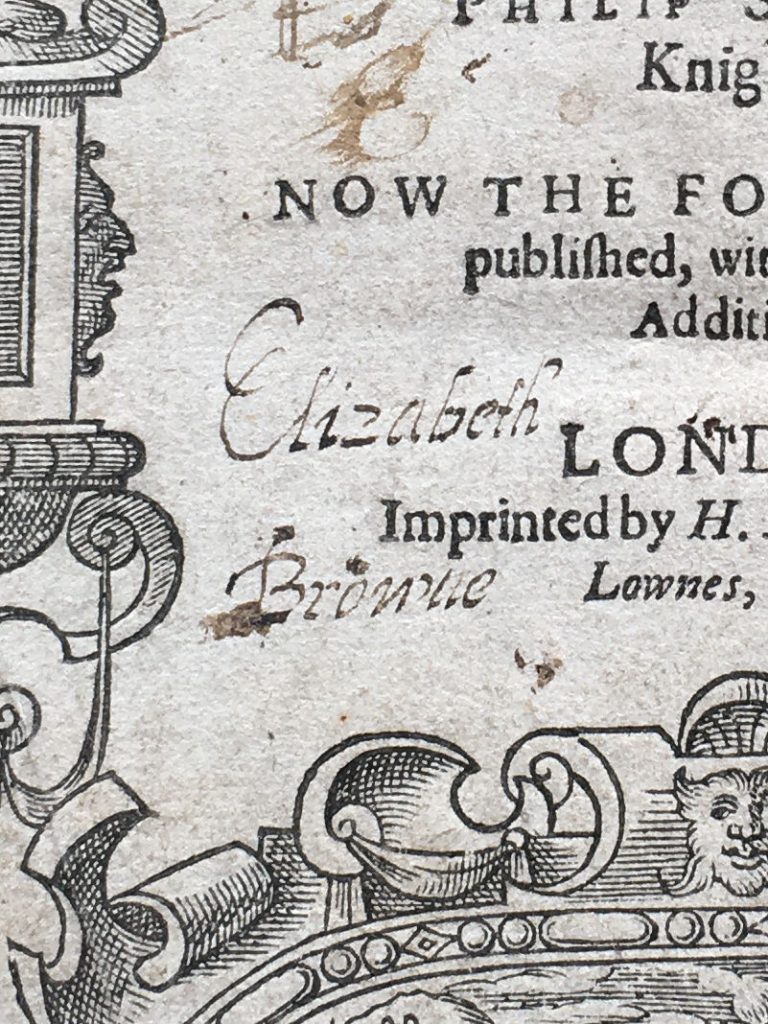
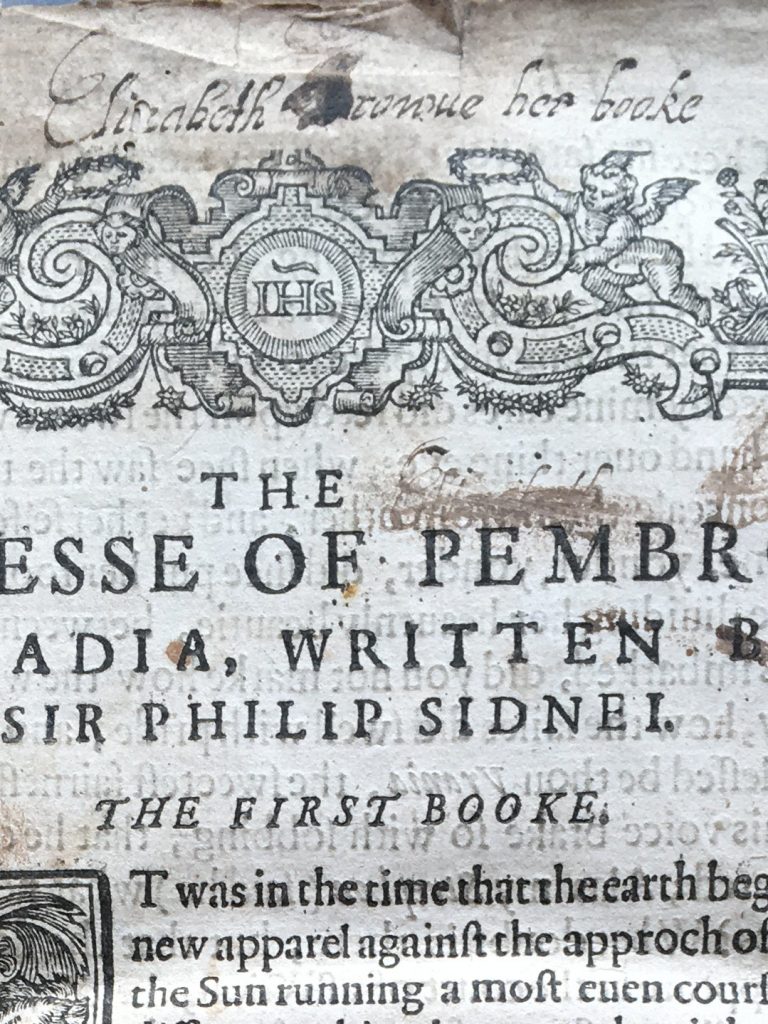

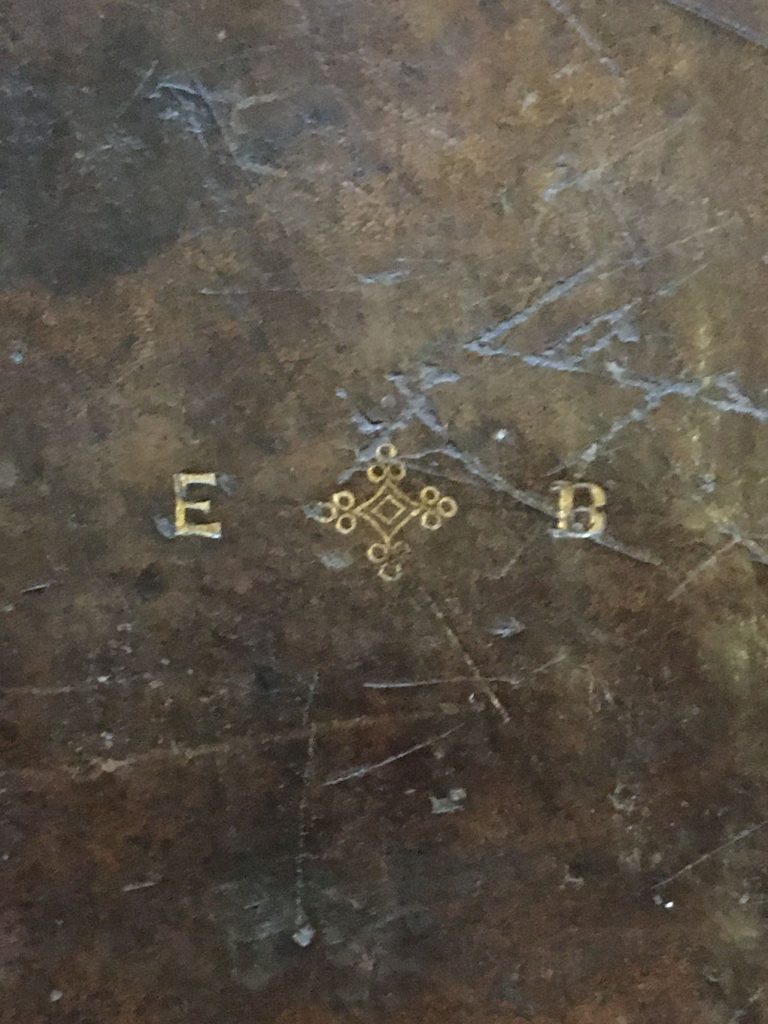
The final clue in the chronology of these owners is a Mary Brow[ne] who has signed her name on odd pages throughout the book “Mary Brow— /is my name” and “Ma— /Br—“. What is significant about Mary Brow[ne]’s marks is that in both cases they disappear off the edge of the page (below). The logical explanation for this is that they were made before the book was bound (and the pages cut) and so placing her before ‘E B’ in the chronology of ownership.
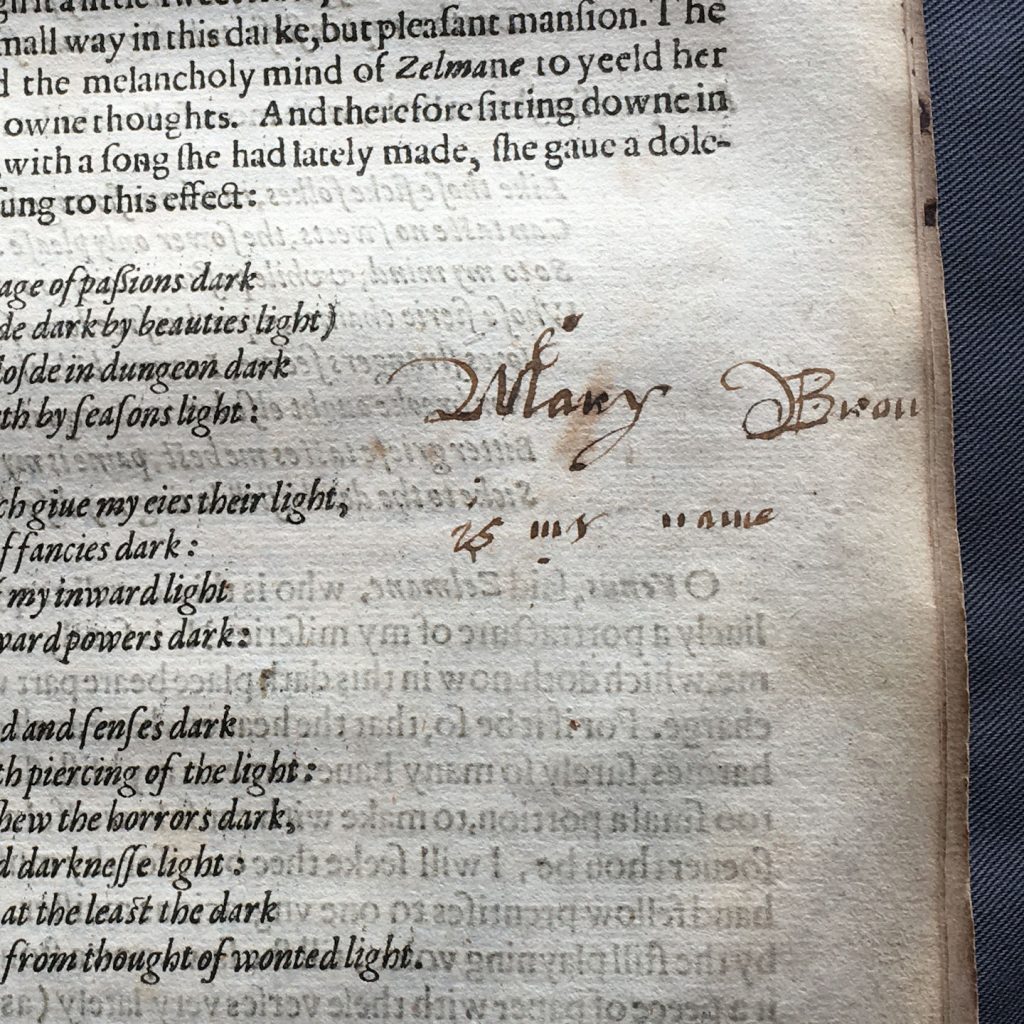
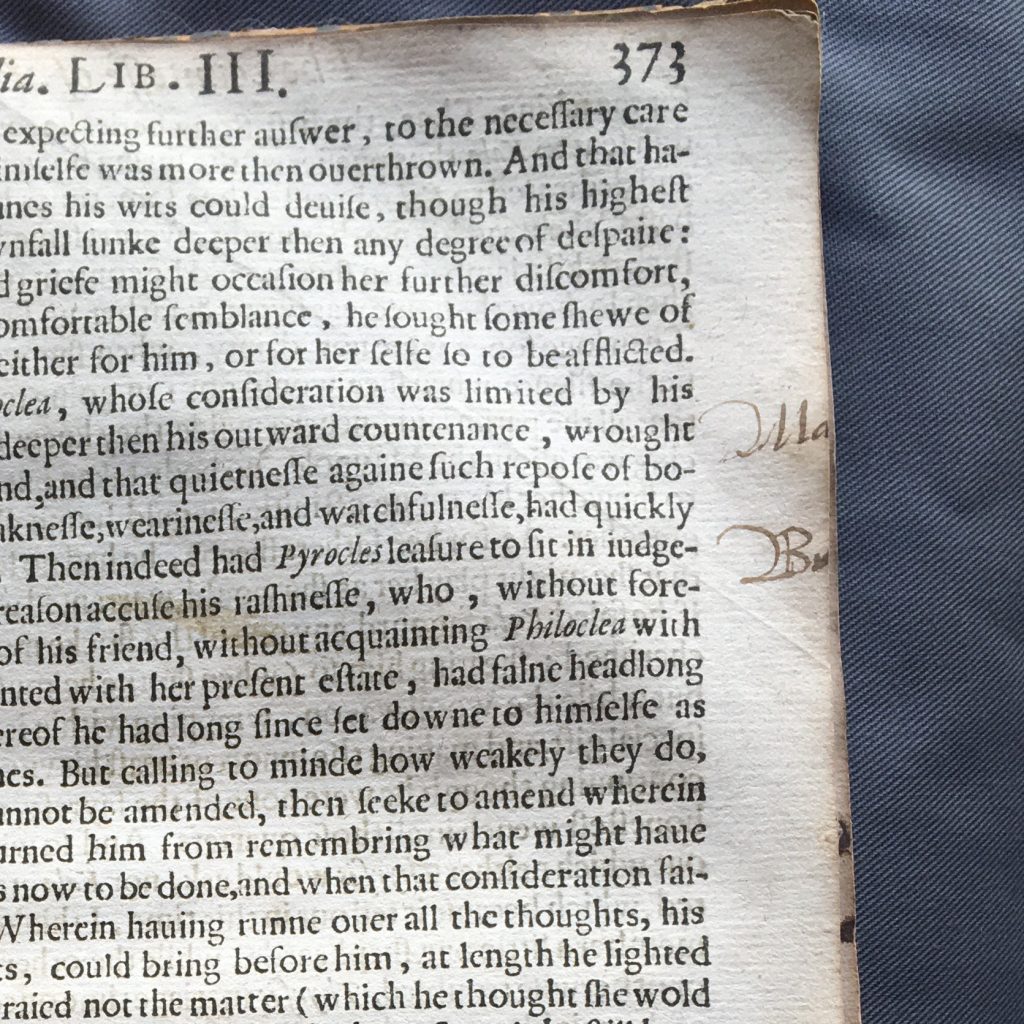
The erased marks on the title page (see top of header image) are unfortunately so obscured as to be illegible, but could conceivably be the name or names of the very first owners. They can certainly be placed before Elizabeth Browne, as Browne’s name has not been erased. The undated Mary Rid[l]ey (front flyleaf) could be the married name of the first Mary Dolman or a later unrelated addition. Thomas Billingsby (front flyleaf), the only male name among the owner’s marks, has no date attached and gives few clues.
A very rough estimated chronology of owners could look something like:
[16??] Erased name on Title Page
[16??] Mary Browne
[16??] Elizabeth Browne
[16??] Elizabeth Dolman
[1694] Mary Dolman
[1697] Margaret Jordan
[1703] Mary Dolman
…
[????] Mary Ridley
[????] Thomas Billingsby
Present Day
Even with all of the annotations, we have little idea about the provenance of the book for 250 years between 1703 and the 1940s. Joyce (Joy) Flint, a former student of St Anne’s (1942, BA English), and her husband Ray bought the book at a London street market stall, where property from houses that had been bombed in the Blitz often ended up: most likely it had been part of a private collection. Joy and her daughter Kate (1973, BA English) have been generous supporters of St Anne’s for many years and when Joy died at the end of 2018, she had stipulated that the book should join our collection. In September 2019, Kate visited and presented us with the book.
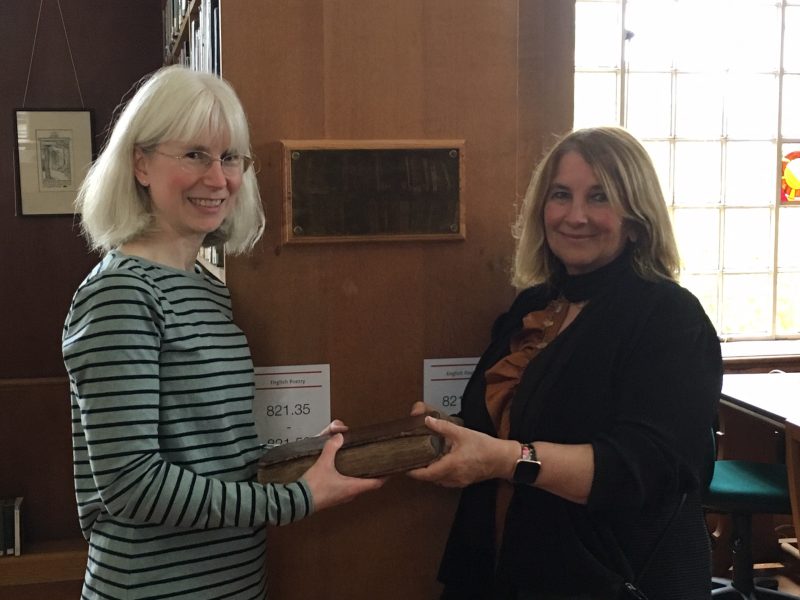
This article was written by Duncan Jones (Reader Services Librarian).